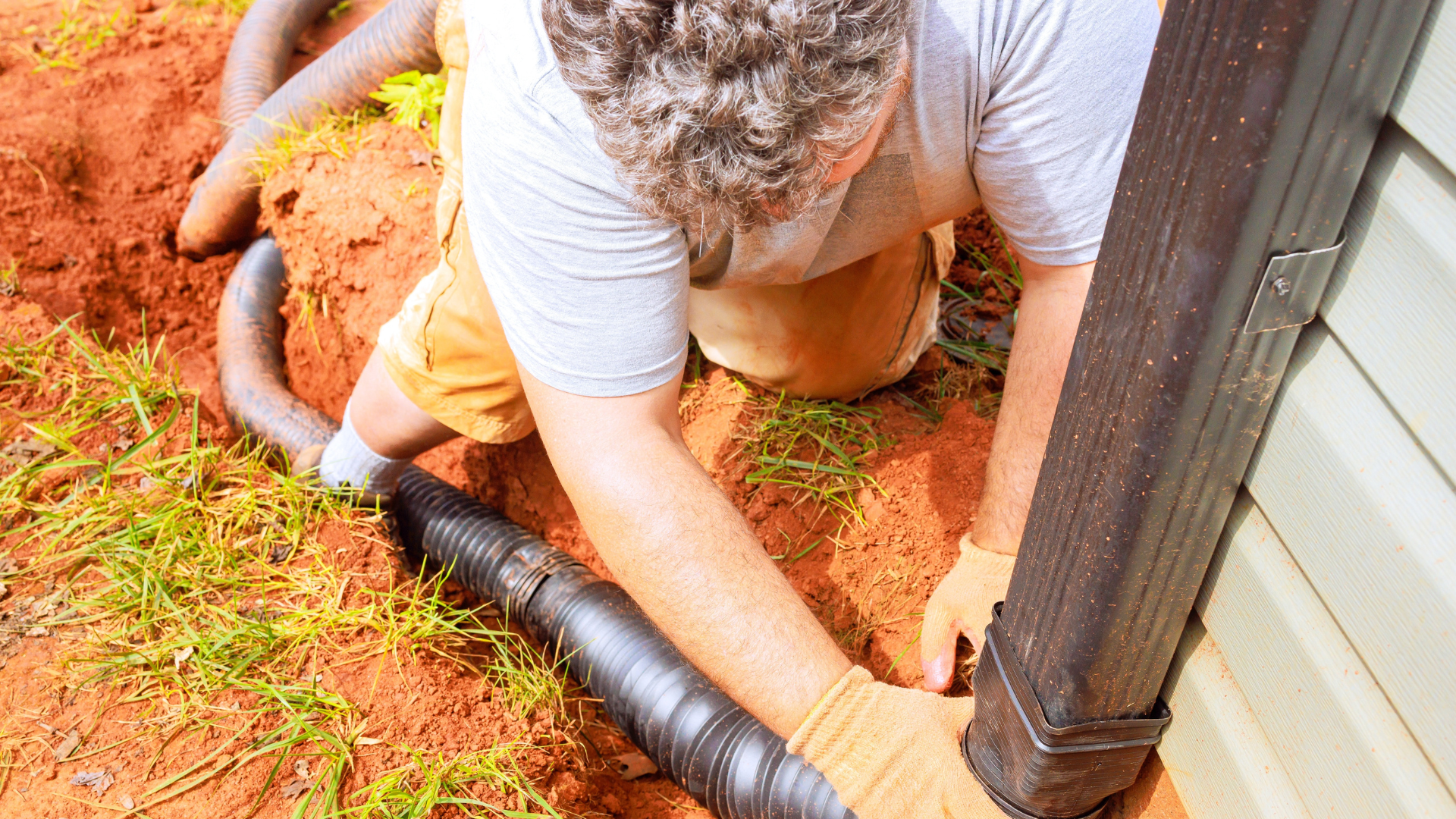The Role of Downspout Extensions in Preventing Basement Leaks, Protecting Foundations, and Supporting Effective Basement Waterproofing
Water around the base of your house isn’t just annoying; it can also lead to big, costly problems. In Canada, where spring thaws, fall rainstorms, and even summer downpours are common, it’s important to keep water away from your home. Installing downspout extensions is a simple but surprisingly effective fix. Could they effectively prevent leaks in the basement? Let’s go deep.
Why Downspouts Are the Unsung Heroes of Basement Waterproofing
The purpose of gutters and downspouts is to catch rainwater that falls on your roof and move it away from your house. But if your downspouts stop too close to the foundation, approximately within a meter or less, water can pool around the walls of your basement. Over time, this moisture gets in, which causes:
- Walls that are cracked or wet
- Mould and mildew are growing
- Mould smells that won’t go away
- The need for costly foundation repair
Adding downspout extensions to keep the basement dry is a beneficial first step that can greatly lower these risks.
Also Read: Top 5 Mistakes Homeowners Make When Waterproofing a Basement
How Proper Downspout Placement Supports Exterior Waterproofing
The length and location of your downspouts are crucial. When used with extensions, they work well with the exterior waterproofing of your home by:
- Ensuring water is directed away from the foundation
Extensions should be at least 1.5 to 2 meters long so that they can move water to a place where it can safely drain away and not come back to your house. - Making sure the soil doesn’t get Too Wet
When the weather changes, soil that is too wet around your house expands and contracts. This process puts more stress on the walls of your foundation. - Lowering the water’s pressure
Waterlogged soil pushes on the walls of your basement, which can cause leaks and cracks over time. - Stopping erosion near the Foundation
Keeping water away from your foundation keeps it safe from the weather and stops erosion. - Use drainage features in landscaping
When you align downspout extensions with swales, French drains, or grade slopes, your entire water management system functions more effectively.
Also Read: Interior Waterproofing Basement vs Exterior Waterproofing
When All You Need Are Downspout Extensions
If surface water is pooling near your home and causing leaks in your basement, which is often the case with short downspouts, clogged gutters, or inadequate grading, downspout extensions can make a big difference. In situations like these, they are very useful:
- Homes in places with clay-heavy soil that holds water longer;
- Older homes where the original gutter systems were too small;
- Properties with flat yards that don’t have natural drainage slopes;
- Areas that only receive water during heavy rain or fast snowmelt.
- Homes where the basement is damp for the first time and hasn’t caused any major damage yet.
In these situations, a small investment spent on downspout extensions can greatly lower dampness and seepage, improve the quality of the air inside, and lower the chance of mould growth, often without the need for more extensive work right away.
When You’ll Need More Than Just Extensions
Downspout extensions are a great way to stop problems before they start, but they don’t fix everything. You might still need help from a professional if:
- Water is getting in through cracks in the walls or floor even though there is adequate drainage.
- The groundwater table is high in your area.
- You already need to fix structural problems in your home.
- You see leaks inside when it’s dry (which means plumbing or other problems that aren’t related to rain).
Advanced basement waterproofing techniques, such as installing an interior drain tile system or an exterior waterproof membrane, may be necessary in these situations. A professional assessment from an experienced contractor who specializes in basement leak repairs can help you find the best solution.
How to Make Your Downspouts Work Better Step-by-Step
- Clean Your Gutters Often
When gutters are clogged, water can overflow and go straight down the walls instead of into the downspout. - Pick the Right Type of Extension
- Rigid PVC or aluminium: lasts a long time and can handle freezing temperatures.
- Flexible Corrugated Plastic: This is easy to move around to take care of the lawn, but it might not last as long.
- Roll-Out Extensions: These automatically extend when water flows through them and retract when they dry. They are great for small spaces.
- Put it in at the Right Angle
Please ensure the extension is angled downward, avoiding any flat or upward direction toward the house. A small tilt back can ruin everything you’ve worked for. - Look at how well it does in different seasons
In the winter, snow and ice can cover the extension. In the spring, make sure that meltwater can flow freely away from the house.
Why Canadian Homes Need Extra Care
Our climate poses several challenges:
- Freeze-Thaw Cycles: When water freezes in the ground, it expands, which puts more pressure on the walls of the basement.
- Heavy Snow Melt: Downspouts that aren’t in the right place can get overwhelmed by quick spring thaws.
- Lots of rain: Sudden storms can dump a lot of water, which tests your drainage systems.
- Changes in soil stability with the seasons: Clay soils get bigger when they are wet and smaller when they are dry, which puts stress on foundations.
- Winter Blockages: Snowbanks, ice dams, or frozen ground can block water paths, making it flow toward the house.
Because of these things, even small mistakes in drainage can quickly turn into big problems that you will have to fix later.
Downspouts as Part of a Bigger Waterproofing Strategy
Downspout extensions are the first step in a plan to protect your home in layers. They work best when you use them with:
- Proper Yard Grading: Making sure the ground slopes away from your foundation so that water can flow naturally.
- Landscaping for Drainage: Using swales, rain gardens, or carefully placed shrubs to slow down and soak up runoff.
- Waterproofing systems for the outside: Using membranes, coatings, or weeping tiles to keep moisture from getting to your walls.
- Regular Inspections: Checking your gutters and foundation for cracks, blockages, or wear every season.
- Professional Assessments: Getting experts from a Basement Waterproofing Company in Toronto to look at any moisture problems that are still going on.
When combined, these strategies help avoid costly foundation cracks repair and keep your basement dry year-round.
The Bottom Line
Yes, downspout extensions can help keep your basement from leaking by stopping water from pooling near your foundation. In many cases, they’re the easiest and cheapest way for a homeowner to fix something. But for them to work, they need to be installed correctly, maintained regularly, and be part of a larger plan for waterproofing the basement.
If you have ongoing moisture or structural problems in your basement, adding extensions and hiring professional basement leak repair contractors will give you a long-term solution that keeps your basement dry and your foundation strong.










